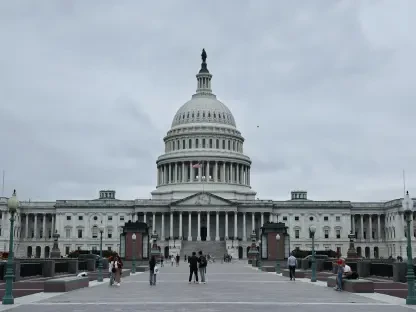Imagine a workplace where the mission to protect public health becomes a target for violence, where federal employees fear for their safety due to the very policies they uphold, and where a single tragic event can shake the nation to its core. On August 8 of this year, a horrific shooting at the Centers for Disease Control and Prevention (CDC) in Atlanta claimed the life of a police officer, with a gunman firing nearly 200 rounds across six buildings, fueled by anti-vaccine sentiments. This incident has ignited a fierce debate about the safety of federal health workers under the Department of Health and Human Services (HHS). This roundup article gathers diverse perspectives from industry leaders, policy analysts, and health worker advocates to explore whether HHS can effectively protect its staff amid rising hostility and distrust in public health institutions. The aim is to highlight varying opinions, actionable insights, and potential paths forward in addressing this critical issue.
Diving into the Crisis: What’s at Stake for Federal Health Workers?
The Atlanta incident has laid bare a stark reality for federal health employees, who now face not only professional challenges but also personal risks. Insights from workplace safety advocates emphasize that the shooting was not an isolated event but a symptom of growing tensions over public health mandates. Many point to the shooter’s documented grievances against COVID-19 vaccines as evidence of how deeply rooted misinformation can translate into real-world harm, placing health workers on the front lines of a cultural battle.
Policy analysts note that the immediate response from the CDC, including shifting to remote work and enhancing security protocols, reflects an urgent need for systemic change. However, there is skepticism about whether these measures address the root causes of hostility. Some argue that without a broader strategy to combat public distrust, such reactive steps may only offer temporary relief, leaving employees vulnerable to future threats.
A significant concern raised by union representatives for health workers is the psychological toll of such incidents. The fear of violence, compounded by online harassment and doxxing, has led to calls for comprehensive mental health support alongside physical safety measures. This perspective underscores a gap in current policies, suggesting that HHS must prioritize a holistic approach to worker protection if it hopes to retain talent and maintain morale in these turbulent times.
Voices from the Field: Challenges and Solutions in Public Health Safety
Aftermath of the CDC Shooting: Reactions and Reflections
The tragic loss of Officer David Rose in the Atlanta shooting has reverberated through the federal health community, prompting a range of reactions. Safety consultants highlight the swift implementation of heightened security at CDC facilities as a necessary first step, but they caution that such measures must be standardized across all HHS locations to prevent similar tragedies. There is a shared concern that inconsistent security protocols could leave other facilities exposed to comparable risks.
Health worker advocacy groups have pointed out the chilling effect this violence has had on staff willingness to engage publicly. Many employees now hesitate to identify themselves as federal workers, fearing retaliation in an increasingly polarized environment. Advocates argue that HHS must invest in anonymity protections, such as removing identifiable markers from vehicles and workspaces, to mitigate these personal safety concerns.
A contrasting view from security analysts suggests that while physical protections are critical, the focus must also shift to preemptive threat assessment. They propose leveraging data analytics to monitor online rhetoric and identify potential risks before they escalate into violence. This proactive stance, though resource-intensive, is seen as a vital complement to reactive measures, offering a layered defense for health workers facing unprecedented dangers.
HHS Staff Concerns: Safety and Trust on the Line
Over 750 HHS staff members and former leaders have voiced their alarm through a collective letter, demanding stronger emergency protocols and protections against online targeting by a set deadline this year. Union leaders representing these employees stress that the fear of personal information being exposed online is a daily stressor, urging HHS to collaborate with tech platforms to curb such harassment. This demand reflects a broader call for accountability in how digital spaces are policed to safeguard public servants.
Public health policy experts add that the staff’s plea for leadership to publicly reject vaccine misinformation is equally crucial. They argue that without clear, evidence-based communication from the top, the erosion of trust in institutions like the CDC will persist, further endangering workers who are already scapegoated for controversial policies. This perspective emphasizes the intersection of credibility and safety as inseparable priorities for HHS.
Some administrative analysts, however, caution against overreacting to staff demands, suggesting that balancing transparency with operational security is a complex challenge. They note that while public statements condemning falsehoods are important, they must be crafted carefully to avoid inflaming existing tensions. This nuanced take highlights the tightrope HHS must walk in addressing internal and external pressures simultaneously.
Leadership Controversies: Navigating a Polarized Landscape
The role of HHS Secretary Robert F. Kennedy Jr., known for his vaccine skepticism, has sparked intense debate among stakeholders. Policy critics argue that his decisions, such as dismissing the CDC’s vaccine advisory panel earlier this year, have undermined scientific integrity and fueled distrust among both staff and the public. They contend that such actions create a hostile work environment, making it harder for employees to feel secure in their roles.
On the other hand, some administrative defenders point to statements from HHS spokespersons affirming a commitment to employee safety, including high-level visits to affected sites post-incident. They suggest that leadership is taking tangible steps to address concerns, even if policy disagreements persist. This viewpoint posits that focusing solely on controversial decisions overlooks ongoing efforts to bolster security and support staff.
Health ethics scholars offer a middle ground, warning that the politicization of public health under any leadership risks long-term damage to institutional credibility. They advocate for bipartisan oversight to ensure that policy shifts do not compromise worker safety or public trust. This balanced perspective calls for structural reforms to insulate health agencies from political volatility, protecting employees from becoming collateral damage in ideological disputes.
Wider Threats: Misinformation as a Catalyst for Hostility
The role of misinformation in driving hostility toward health workers is a recurring theme across various analyses. Digital culture researchers note that the Atlanta shooter’s writings, steeped in anti-vaccine rhetoric, mirror broader online narratives that vilify federal employees. They argue that HHS must partner with educational and media entities to counter false claims, viewing public literacy as a critical defense against such threats.
Regional policy observers highlight how cultural divides exacerbate these challenges, with certain areas showing heightened resistance to public health initiatives. They suggest that localized engagement strategies, tailored to specific community concerns, could help rebuild trust and reduce animosity toward workers. This approach emphasizes the need for HHS to adapt its outreach to diverse societal contexts rather than relying on blanket policies.
Some technology advocates push for stronger legal frameworks to address online hostility, arguing that current laws lag behind the rapid spread of digital threats. They propose penalties for doxxing and targeted harassment of public employees, seeing this as a deterrent to potential aggressors. This forward-thinking idea underscores a growing recognition that virtual spaces are as critical to worker safety as physical ones, demanding innovative responses from HHS.
Moving Forward: Key Takeaways and Recommendations
Reflecting on the diverse insights gathered, it becomes clear that protecting federal health workers requires a multifaceted strategy. Safety experts, policy analysts, and advocacy groups agree on the urgency of enhanced security funding to ensure consistent protections across all HHS facilities. Additionally, transparent communication from leadership is seen as vital to counter misinformation and restore trust, both within the workforce and among the public.
A common thread across perspectives is the need for legal safeguards against online targeting, with many urging HHS to lobby for stricter regulations on digital harassment. There is also a consensus that mental health resources must be prioritized to support employees grappling with the aftermath of violent incidents and ongoing hostility. These actionable steps provide a roadmap for immediate improvements in worker safety.
Beyond these measures, several voices advocate for a cultural shift in how science and public health are perceived, suggesting that nonpartisan education campaigns could bridge societal divides over time. For those seeking deeper understanding, exploring reports on public health policy and workplace safety from reputable think tanks is recommended as a next step to stay informed on this evolving issue.
Final Thoughts: Building a Safer Future for Public Health
Looking back, the discussions with various stakeholders revealed a shared concern over the vulnerability of federal health workers, amplified by the tragic events in Atlanta. The clash between leadership decisions and staff demands, coupled with the pervasive threat of misinformation, painted a complex picture of a system under strain. Each perspective contributed unique insights, from security enhancements to cultural outreach, highlighting the depth of the challenge.
As a path forward, HHS and policymakers were encouraged to unite in implementing robust safety protocols, legal protections, and trust-building initiatives. A renewed focus on bipartisan support for public health emerged as a critical solution to depoliticize agencies like the CDC. These steps, if taken seriously, promised to fortify the foundation of America’s health infrastructure against future threats.
Moreover, the dialogue underscored an opportunity for citizens to play a role by advocating for evidence-based policies and supporting health workers through community engagement. By fostering a collective commitment to safety and integrity, the groundwork was laid for a resilient public health system capable of withstanding both physical and ideological challenges in the years ahead.









